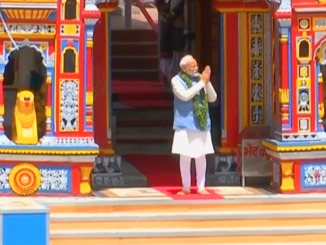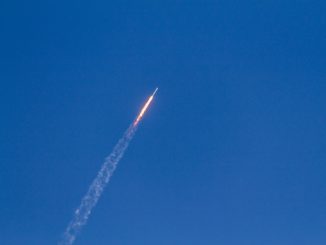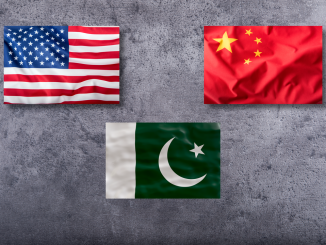
As the world moves into a new phase of considered least stable multi-polarity, three great powers videlicet, the United States of America (USA), China, and Russia wrestle for sway at the global level. Although Russia has shown sufficient disregard for US-led unipolarity, the primary challenger to US primacy is China, which was willingly allowed by three successive US administrations to free ride the US-led system until the Xi-led China aggrandized to challenge the US’s preponderance.
The Offensive Realism proposes that China’s grand geopolitical scheme ought to be to dominate Asia before trying to project power elsewhere. Conversely, as a status quo power in the international system, the US is projected to resist the emergence of great powers anywhere in the world, which can dominate their region and seek to project power at the global level. Considering the context, to rejuvenate its global primacy, the US has to make sure that China under no circumstances achieves dominance in Asia: power asymmetry between China and other countries in Asia never increases to such levels where China emerges unchallenged on the Asian landmass.
Taking into consideration that at this time no country in Asia is even closer to China on overall national power account, Washington is relying on its core strength in the international system: reinvigorating the old web of alliances and searching for new partners to form a balancing coalition against China.
India, as Washington’s deputy in the Indo-Pacific, is the frontline member of the balancing coalition and from Washington’s standpoint, India must accumulate economic, military, and technological strength so that it can undertake the duty assigned to it by the US. i.e. to play a vanguard to contain and possibly rollback China to resuscitate the US-led hegemonic order.
Likewise, India also aims to counteract China but it has global ambitions of its own manifested in Indian leadership’s long-held desire to project India as a leading global power and “shoulder greater global responsibilities”. And so, the Indo-US strategic partnership, besides being the external balancing against the threat posed by China, is a principal component to New Delhi’s shrewd stratagem to free ride the US-led system ultimately to achieve the status of global-power. Accordingly, in addition to the military and technological bolstering, India is expecting Washington to help achieve its ambitious economic goal of matching or even surpassing China’s economic strength.
Unquestionably, India possesses the latent potential of great power, but this potential is yet to be converted into tangible might that could enable India to act as a pole in the international system. The Indo-US entente, however, is likely to undermine India’s aspiration to act as a pole in the international system, not only in the current setting but also at any point in the future.
According to Prof. John Mearsheimer, “To qualify as a pole in a global or regional system, a state must have a reasonable prospect of defending itself against the leading state in the system by its own efforts.”
As India sought to externally balance against the Chinese threat by establishing a de-facto alliance with the US, its claim to act as a pole, even in Asia’s regional system, was the immediate fatality. Nevertheless, considering a long-term perspective, if India takes giant leaps with the US as an enabler and amasses strength to match or surpass China, which continues to grow at its current or slightly less pace, in the meantime, India either could be approaching the US or even surpass its senior partner in certain aspects of national power. In such a scenario, as the offensive realism proposes and callous dynamics of great-power politics entail, India would aspire to enhance the power asymmetry between itself and China, ultimately trying to establish its regional dominance in Asia and project power across the globe.
In the envisioned scenario, the US in a pursuit to contain one challenger to its preponderance would end up creating another, and hence India may replace China as the primary threat to the US ambition of revivifying unipolarity at the global level. The strategists in Washington would have to be dewy-eyed to assume that if they help India achieve the status of global-power, it will behave differently than the other great powers. The much-hyped ideological or democratic convergences in the case of India and the US are likely to be overwhelmed by the structural imperatives of the international system and the ruthless realities of great power competition would appropriate the relationship. Given the setting, India capable enough to play a hyperactive role in the balancing coalition against China, fits into Washington’s geostrategic calculus instead of an India muscular enough to challenge the US global ambitions. However, even if Washington repeats its China blunder by facilitating India’s rise to the status of global power, and India behaves exactly like other great powers and aspires to dominate Asia, Washington will still have a trump card in its hand, i.e., India’s almost inextricable entanglement in the US-led technological and military orders. By that time, India’s technological and defense reliance on the USA, which is all set to upsurge as an indispensable component of entente – is likely to emerge as the biggest impediment in the way of India asserting itself as a great power in doing so a ‘pole’ in the international system. Alternatively stated, India’s technological and defense interlinkages with the US would not allow a formal decoupling between the established pole to be precise, the US, and the aspirant pole vis-à-vis India, or else, it would come with such costly and daunting concomitants that the aspirant pole’s global ambitions would be severely dented.




Be the first to comment